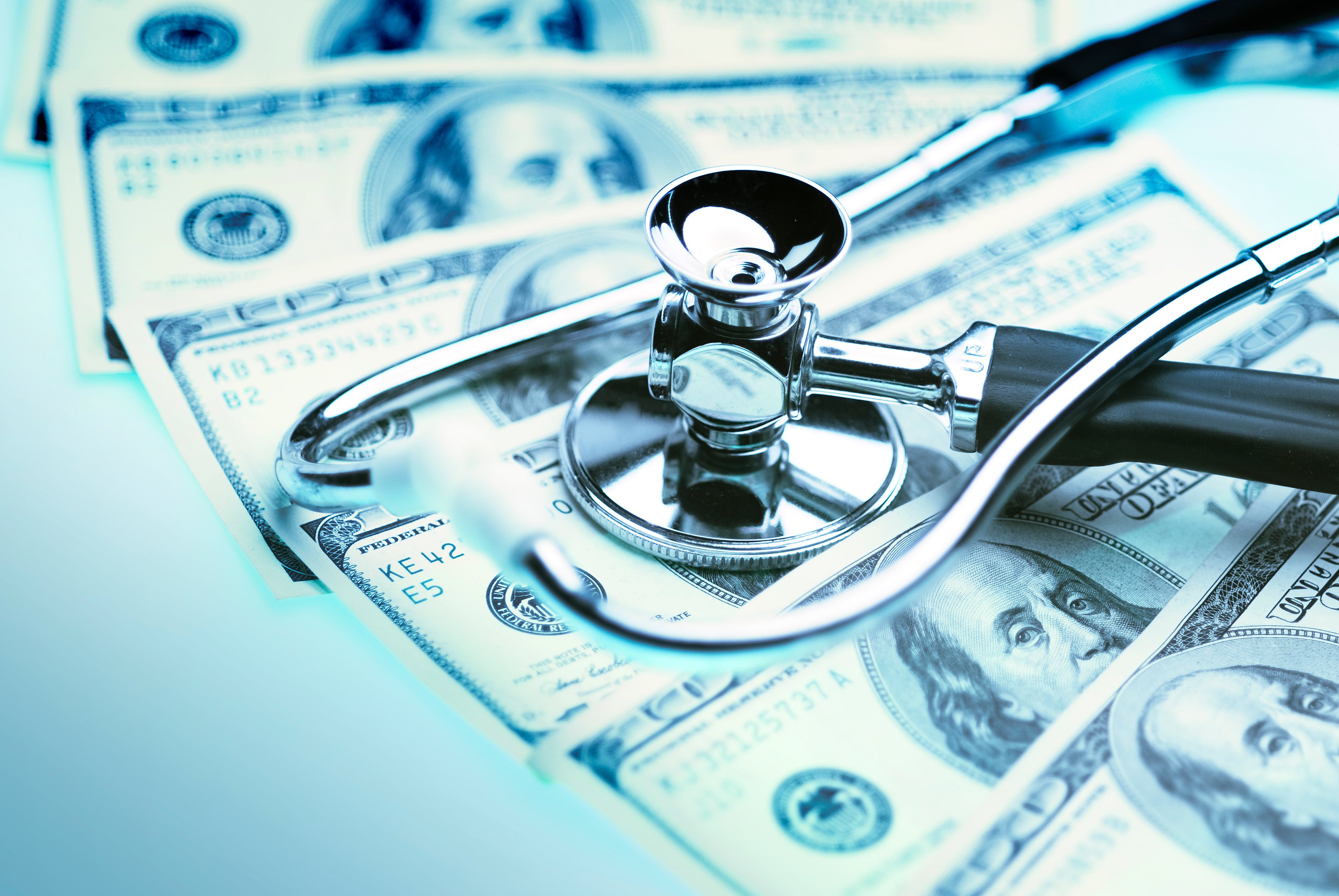It's not uncommon for me to applaud the pharmaceutical industry as a solid long-term investment. Pharmaceutical companies offer relatively stable (but often impressive) margins; they cater to an aging population in need of treatment that is only growing; and many offer hearty dividends, which is perfect for those investors who are less risk-averse and looking to diversify their investment portfolio.
But, it's not all cookies-n'-cream either. In fact, there are quite a few serious concerns that could threaten to sap pharmaceutical earnings and growth despite the positives which I've listed above. Today I'll outline three scenarios that should be cause for concern among the pharmaceutical industry and discuss what's being done by the sector to combat these threats.
1. Generic competition
The biggest concern on the mind of every pharmaceutical company shareholder is whether your company has the pipeline to survive "going over the patent cliff." In 2012, an estimated $38.3 billion worth of drugs fell prey to the patent cliff and generic competition, with a minimal amount of branded medication replacing those now expired drugs, according to a research report put out by Accenture. The good news for pharmaceutical companies is that this trend in patent expirations versus replacement sales is expected to tighten by 2016, with just $17.8 billion in sales expirations projected. While promising, that still doesn't solve the question of what pharmaceutical companies are to do now if their pipelines are in peril.
Generic drug producers bring a double-edged sword to the table. Not only do they get the privilege of receiving a shorter drug review process because they only need to prove bioequivalence to the branded drug, but generics are also ridiculously cheaper to produce than branded drugs since there's no need for clinical trials -- quickly wiping out 90%, or more, of a branded drug's revenue stream within a year. Now I'm not saying generics don't have their place, because I've had this discussion already and determined that low-cost generics are a smart addition to your portfolio, but it depends on how smart your pharmaceutical company is handling the oncoming cliff.
So far, Bristol-Myers Squibb (BMY +2.44%) and Eli Lilly (LLY +1.07%) have shown investors how not to handle the patent cliff.
Bristol-Myers has been intent on enhancing its "string-of-pearls" strategy, which involves purchasing new drugs into its pipeline. That strategy got the company a $1.8 billion writedown last year after its $2.5 billion purchase of Inhibitex in January 2012 turned out to be a dud. Inhibitex's primary drug, later to be known as BMS-986094, for hepatitis-C was found to have caused a death in a patient and hospitalizations of numerous other patients. With the drug scrapped, Bristol-Myers has been left with egg all over its face. Perhaps the recent FDA approval of blood-thinner Eliquis will help change that, but I'm not holding my breath.
Eli Lilly, my selection for pharma's most perilous pipeline, is in even a more precarious position. This year alone, Eli Lilly is expected to have 31% of its total sales exposed to generic competition, according to FiercePharma. Both insulin drug Humalog and antidepressant Cymbalta contribute a combined $7 billion in annual revenue, which will almost assuredly disappear within the next year. Furthermore, Eli Lilly's experimental Alzheimer's drug solanezumab stumbled during late-stage trials, and, while it may offer some benefits in more mild forms of the disease, it'll be years before we know if it has any value whatsoever.
If you want an example of a pharmaceutical that's done an exemplary job fighting off the patent cliff, look no further than GlaxoSmithKline (GSK 0.32%). Glaxo has battled back generics by beefing up its own pipeline with two long-term COPD treatments currently working their way to the FDA review desk, Breo Ellipta and Anoro, as well as through strategic purchases, such as that of Human Genome Sciences for $3.6 billion to gain full rights to Benlysta, the first systemic lupus drug approved in 40 years.
2. Drug prices getting out of hand
This is one of those out-of-sight, out-of-mind concerns, but branded drug companies need to walk a very fine line when pricing their drugs; otherwise a continued escalation in costs could drive patients, physicians, insurers, and even U.S. regulators to intervene.
I can't overstate this enough, but drug prices matter... a lot! Drug prices should be set high enough that a company that has invested what is close to a billion or more in the development process can get its costs back and turn a profit. However, drug prices can't be so high that physicians worry about reimbursements, insurers begin to place ridiculous restrictions on usage for their plan members, and regulators probe your marketing practices. As you can see by the following chart from the Centers for Medicare and Medicaid Services, prescription drug costs are soaring for individuals, the government, and your insurers.

Source: Centers for Medicare and Medicaid Services, Medicare Current Beneficiary Survey.
Marketing probes have become an all-too-common practice as of late. Questcor Pharmaceuticals, for instance, is currently being investigated concerning its marketing practices over its wonder drug Acthar, which is priced at $23,000 per vial across all 19 ailments it's approved to treat.
The now bankrupt KV Pharmaceuticals is another not-so-shining example. Its preterm-birth prevention drug, Makena, was approved in 2011 and the company quickly priced the injection at an outrageous $1,500. Considering that similar compounds were being injected by physicians for $20, the pricing of Makena was ludicrous... so ludicrous, in fact, that Congress even got involved. The end result was a slap against Makena's patent exclusivity, a huge reduction in the price of the drug (but still nowhere near where advocacy groups felt it should price), and the eventual bankruptcy of KV Pharmaceuticals just months later.
Perhaps no drug stands out as a better example as pricing itself out of success than Dendreon's (NASDAQ: DNDN) advanced-stage prostate cancer treatment, Provenge. The three injection treatment -- which involves harvesting a patient's own immune cells, exposing them to a protein that "teaches" them how to seek out and attack prostate cancer cells, and then reinjecting the cells back into the patients' prostate – costs $93,000 and has been growing like a snail due to slightly cheaper all-oral late-stage treatments available from Johnson & Johnson and Medivation. Dendreon may be able to salvage sales if it can show efficacy as a combination therapy with these all-oral drugs, but, as of now, some insurers simply won't cover the drug.
There are two ways to walk the tightrope when it comes to pricing. Either be an orphan drug developer catering to a rare disease where a high-price-point is already expected, or sell the benefits of your product to the insurance industry, which ultimately takes the out-of-pocket costs away from consumers and gets them using branded medications. VIVUS (VVUS +0.00%) may not be the best example after sales of its anti-obesity drug, Qsymia, came up $1 million shy of the $3 million analysts had expected last quarter, but, to me, it offers a picture-perfect case of how to handle pricing backlash with the company partnering with Aetna and seeing prescriptions pick-ups soar almost immediately afterward.
3. The fear of over-prescribing medications
This is another one you don't think about all too often, but physicians in the back of their mind have to consider not prescribing antibiotics every time you or your child gets a sniffle.
Based on the findings of the Centers for Disease Control and Prevention, bacteria are becoming more resistant to primary antibiotics. Physicians often cited that time pressure, patient demand, and diagnostic uncertainty led to their decision to prescribe antibiotics when they in fact may not have been necessary. The CDC has concluded that there could be a 30% reduction in outpatient antibiotic prescriptions written without adversely affecting patient health. That's staggering and a concern for the pharmaceutical industry.

Source: Centers for Disease Control and Prevention, via Wikimedia Commons.
One easy way to counter this is with more consistent marketing campaigns directed at both physicians and consumers that highlight the benefits of their drug.
Another idea is to encourage pharmaceutical companies to develop new types of antibiotics to treat strains of bacteria that are becoming more resistant to standardized forms of medication. Unfortunately, this one's been a bit tricky because the CDC has itself tried to do its part in educating physicians to lower the amount of antibiotic prescriptions they write unless it's absolutely necessary. It can be pretty difficult to encourage research and development of a drug which may have little use or ultimately loses the company money. Sinovac Biotech's EV71 -- a hand, foot, and mouth disease vaccine that may only help a small patient population in China -- is a great example. Although EV71 performed well in late-stage trials last week, there may be little impetus for the Chinese government to utilize the vaccine on a disease where death rates are already so minute (under 0.1%).
Luckily for now, over-prescribing remains a distant concern that isn't heeded too closely by physicians, but its effects should still be closely monitored.






